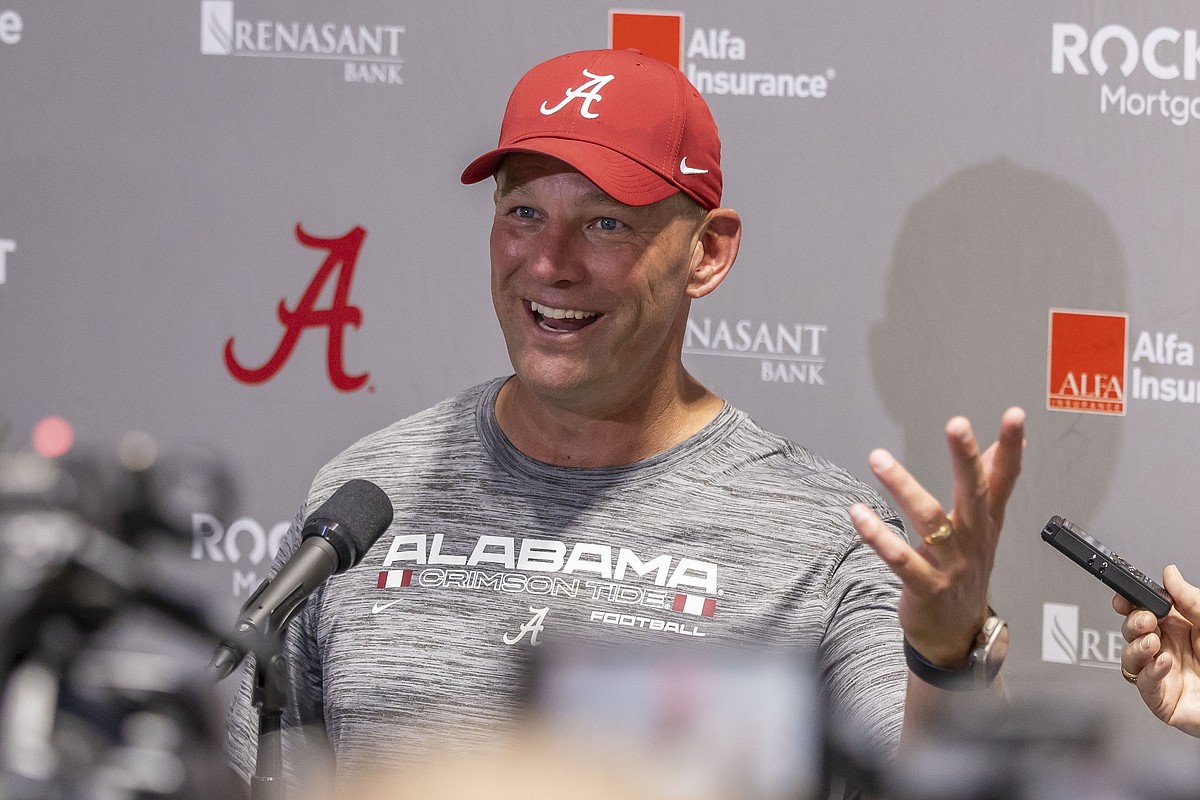Why Alabama Head Coach Kalen DeBoer Believes the Crimson Tide Are Reclaiming Dominance on the In-State Recruiting Trail in 2025
In the heart of Alabama, where high school football is a year-round way of life and Friday nights often mean more than Saturdays in some communities, winning in-state recruiting battles is more than just a box to check for a college football program—it’s a declaration of dominance. For decades, the University of Alabama under Nick Saban transformed the state’s top talent into national championship material. But as the program transitioned to new leadership under head coach Kalen DeBoer, one of the immediate challenges was clear: could he maintain the recruiting stranglehold that had long kept the state’s elite talent flowing to Tuscaloosa?
Now, as the 2025 recruiting cycle takes shape, DeBoer believes the answer is not only yes—but emphatically so. In recent comments to reporters and during media availability sessions, the Alabama head coach expressed confidence that the Crimson Tide have not only stabilized their in-state recruiting presence following a leadership transition but have actively regained momentum in building strong, lasting connections with Alabama’s top high school prospects, their families, and coaches. And it’s not just hope or lip service driving that sentiment—it’s rooted in hard results, a deliberate approach, and a return to fundamentals that made the Alabama brand what it is.
When DeBoer first arrived in Tuscaloosa, he knew that establishing trust and familiarity with in-state prospects and programs would be one of his most urgent priorities. Despite his impressive resume and offensive acumen, DeBoer was still viewed by many as a relative outsider—someone not yet embedded in the cultural fabric of southern football. While his coaching pedigree earned immediate respect, recruiting in Alabama is deeply personal. High school coaches need to believe in you. Families want to see consistency. Players want to feel prioritized. In the early months, those relationships needed to be built from the ground up, and DeBoer wasted no time making it happen.
According to the head coach, a significant part of Alabama’s recent in-state recruiting resurgence has come from his own commitment to being visible and present. Whether visiting high schools, attending camps, or simply maintaining open communication with coaches and mentors throughout the state, DeBoer has made it clear that Alabama will never take its in-state roots for granted. This effort, he says, has already paid dividends in how the staff is being received during evaluations and home visits. There’s a renewed sense of trust, which has allowed Alabama to not only stay in the mix for top prospects, but often to close the deal when it matters most.
Another key factor that DeBoer emphasized is the quality and alignment of the recruiting staff. Understanding that relationships are built through consistency and credibility, DeBoer made it a point to assemble a group of assistants and personnel directors who not only understand the landscape of in-state recruiting but also mirror the program’s vision and values. Several of Alabama’s position coaches have deep ties to the region and bring both the energy and familiarity needed to connect with local talent. The message being delivered is unified: Alabama is still the best place for elite players in the state to compete at the highest level, get developed, and reach the NFL.
What also sets Alabama apart in the 2025 cycle is the re-emphasis on evaluating players early and maintaining steady contact throughout their development. DeBoer explained that his staff has made a concerted effort to identify in-state prospects as early as their freshman or sophomore years and then stay engaged as those players rise through the ranks. This is particularly important in a state where loyalty and long-term relationships often influence recruiting decisions more than flashy pitches or late pushes from national powers. Alabama’s ability to start building that trust early has been crucial in fending off rising competition from SEC rivals like Auburn, Georgia, and LSU, who have also made aggressive plays for top Alabama high schoolers.
DeBoer also noted the importance of transparency and honesty in the recruiting process. In a landscape increasingly shaped by NIL considerations, transfer portal movement, and recruiting pressure, Alabama has made it a priority to give families a clear, no-nonsense picture of what to expect in Tuscaloosa. That includes outlining how the player will be developed, what their path to playing time looks like, and how Alabama’s resources—both athletic and academic—can support their goals. DeBoer believes that this approach has earned the respect of many families who want more than just a scholarship offer; they want a plan, and they want to feel their sons will be genuinely cared for.
The numbers back up DeBoer’s confidence. Alabama has already secured verbal commitments from several of the state’s top-ranked players in the 2025 class, including multiple four-star and five-star prospects who cited a strong relationship with the new staff as a deciding factor. Perhaps more importantly, Alabama is not just winning commitments—they’re doing so against intense competition. In several recent cases, top in-state targets were being heavily courted by national programs like Ohio State, Texas, and USC, yet ultimately chose to stay home and wear the Crimson and White.
It’s not lost on DeBoer that in-state recruiting isn’t just about building next year’s roster—it’s about sustaining a culture. The players who grow up watching Alabama football every Saturday, who understand the intensity of the Iron Bowl, who have a deep appreciation for what it means to play for their home state—those are often the emotional anchors of a team. They set the tone in the locker room. They bring pride, fire, and accountability. And they help transmit the identity of the program to new players, especially those coming from out of state. DeBoer knows that if Alabama is to maintain its championship culture in a new era, those in-state leaders must be central to the equation.
DeBoer’s philosophy is also bolstered by what’s happening on the field. He pointed to several recent in-state products already making waves in Alabama’s practices and team leadership, reinforcing the idea that the state continues to produce high-end talent and that those players can thrive in his system. Whether it’s a lineman who came in physically ready, a defensive back learning complex coverages faster than expected, or a wide receiver making highlight-reel catches during 7-on-7s, DeBoer believes Alabama’s in-state signees are proving the strategy is working.
There’s also an understanding within the program that in-state recruiting success begets more success. When top players commit early and publicly back the program, it creates a snowball effect. Younger prospects take notice. High school coaches talk. Social media buzz spreads. Suddenly, the perception that Alabama is the clear destination for in-state stars becomes reality again. And in a state where college football allegiances are generational and deeply rooted, perception often becomes destiny.
Still, DeBoer remains grounded in his outlook. He understands that in-state recruiting must be earned every year. Complacency, he said, is the enemy of sustained dominance. That’s why he and his staff are treating each cycle with the urgency and precision it demands. They are continuing to scout every corner of the state, from powerhouse programs to smaller rural schools, ensuring that no potential gem goes unnoticed. Alabama’s recruiting machine is operating once again with the precision fans came to expect under Saban, and DeBoer is quickly proving he understands the formula.
As the 2025 recruiting cycle enters its final stretch, Alabama’s in-state haul will likely define the narrative of DeBoer’s first full recruiting class. But if his comments and actions are any indication, it’s a narrative he’s not only ready for—but one he’s actively shaping. In reclaiming their grip on the Alabama high school football pipeline, the Crimson Tide under Kalen DeBoer are doing more than collecting talent—they’re restoring the foundational relationships that built a dynasty. And with that foundation once again secure, the future of Alabama football looks not only stable, but ready to thrive.



